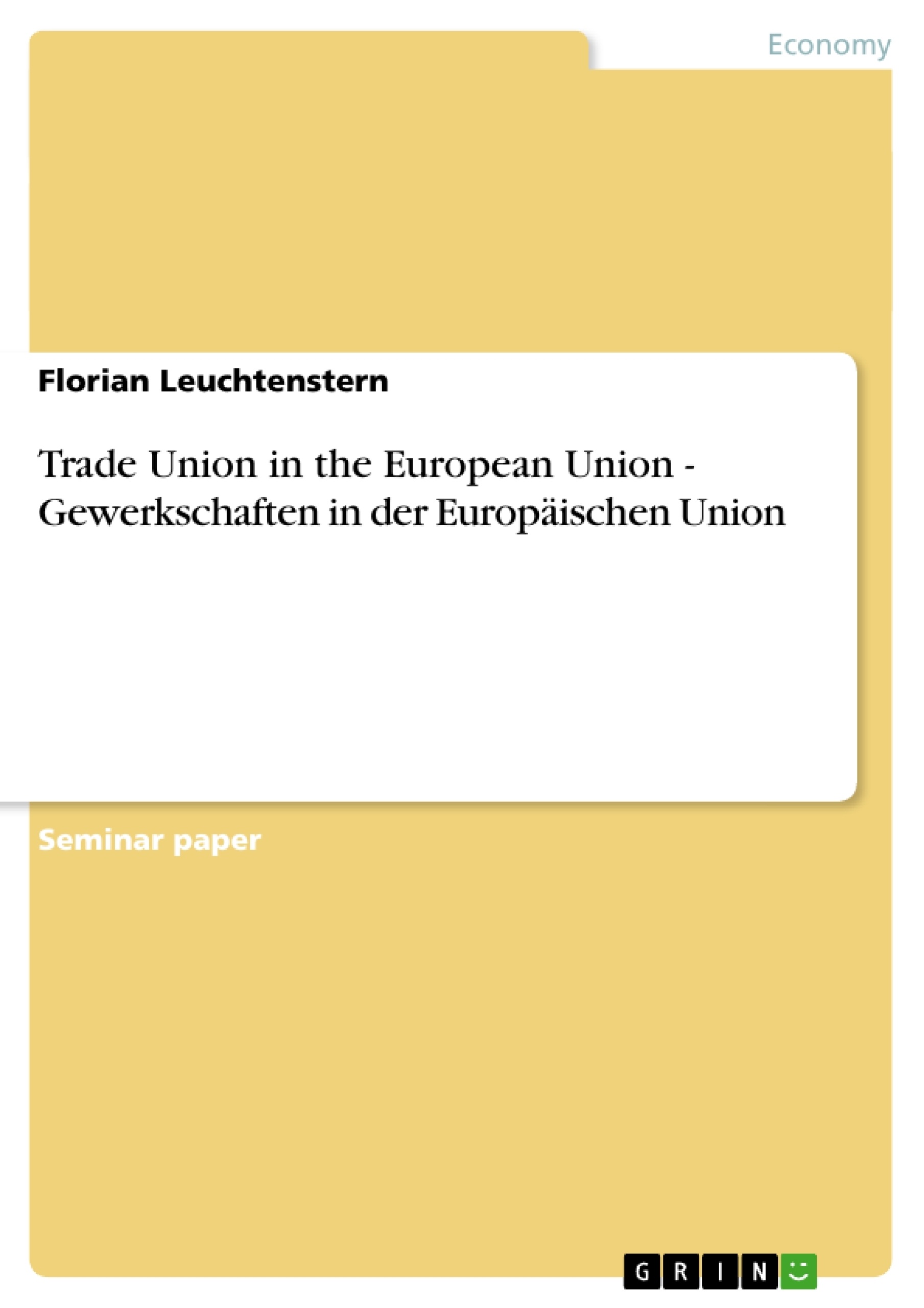The European Union (EU) “is neither a new State replacing existing ones nor is it comparable to other international organisations” (European Communities, sine anno). Instead the idea behind it is a step by step approach to integrate organizational duties normally run by the nation states on a super national level. This includes the establishment of a European citizenship, to ensure freedom, security and justice, promote economic and social progress, and asserting Europe’s role in the world (European Communities, sine anno). For the first time in history the member countries voluntarily gave up parts of their sovereignty to become part of a supranational organization. The members agreed to the “creation of an area without internal frontiers” (European Communities, 2002), which means basically that capital and workforce is free to travel and settle without restriction within the borders of the European Union. That kind of freedom and the possibility of the council of the European Union to crate laws which replace their national counterparts (Fontaine, 1998) have increased the pressure on the stakeholders of labour relation to get to a European level as well. With this shift from the national towards the European view trade Unions has to change their way of work. The basic model most of the Western Europe used worked on a national or industry level where trade unions participated in the industrial democracy and collective bargaining. These unions where backed by also national union confederation which coordinated activities among and minimized conflict between confederated unions (Waddington, 2001, p. 449). Today this model may become more and more obsolete and trade unions has to struggle more and more to survive in a united Europe. So it’s the question which threats do trade unions have to face these days and which approaches have been made to solve these threats or perhaps which opportunities do trade unions have right now?
Inhaltsverzeichnis (Table of Contents)
- Introduction
- Overview
- The Role of Trade Unions within the European Union's member countries
- Union density
- Individual characteristics
- The Ghent system
- Union representatives' access to the workplace
- Partnership to political parties
- Level of labour market centralization
- European Collective Bargaining
- National level
- Industrial level
- European Level
- Problems Trade Unions have to face
- Multinational companies
- Member decline
- High levels of unemployment
- Workforce composition
- Approaches solve trade unions' current problems
- Attempts to organize workforce
- Social pacts
- Trade Union mergers
- Trade Union Confederations
Zielsetzung und Themenschwerpunkte (Objectives and Key Themes)
This literature review aims to explore the current situation of trade unions in the European Union, analyzing their role, challenges, and potential solutions. It focuses on understanding the diversity of trade union density across EU member states, examining the factors contributing to this variation. Additionally, the review investigates the dynamics of collective bargaining on both national and European levels, analyzing the impact of multinational corporations and workforce changes on trade unions. Finally, it explores various approaches employed by trade unions to address these challenges, including attempts to organize the new workforce, social pacts, mergers, and the role of trade union confederations.
- Union Density and its Determinants in the European Union
- Collective Bargaining at National and European Levels
- Challenges Faced by Trade Unions in the European Union
- Approaches to Solving Trade Union Challenges
- Role of Trade Union Confederations in the European Union
Zusammenfassung der Kapitel (Chapter Summaries)
The review begins with an introduction highlighting the significance of trade unions within the European Union's integration process, emphasizing the need for adaptation in the face of changing dynamics. It then examines the varied roles and structures of trade unions across EU member states, focusing on Austria, Belgium, Denmark, Finland, France, Germany, Ireland, Italy, The Netherlands, Sweden, and the United Kingdom. The review delves into the determinants of union density, exploring factors like individual characteristics, the Ghent system, union representatives' access to the workplace, partnership with political parties, and the level of labor market centralization.
Next, the review analyzes European collective bargaining, examining its dynamics at both national and industrial levels, focusing on negotiation partners and the range of agreements achieved. It further examines the challenges faced by trade unions in the European context, particularly the impact of multinational companies using arbitrage of capital to bypass national trade unions and the decline in membership. This section also explores the issue of high unemployment and changing workforce composition.
Finally, the review examines various approaches undertaken by trade unions to tackle these challenges, highlighting attempts to organize the new workforce, the implementation of social pacts, mergers, and the significance of trade union confederations.
Schlüsselwörter (Keywords)
The primary keywords and focus topics of this text are: trade unions, European Union, union density, collective bargaining, multinational companies, member decline, workforce composition, social pacts, trade union mergers, and trade union confederations. The work examines these concepts within the context of European integration and labor relations, highlighting the challenges and opportunities facing trade unions in a globalized economy.
- Citation du texte
- Florian Leuchtenstern (Auteur), 2003, Trade Union in the European Union - Gewerkschaften in der Europäischen Union, Munich, GRIN Verlag, https://www.grin.com/document/23209



